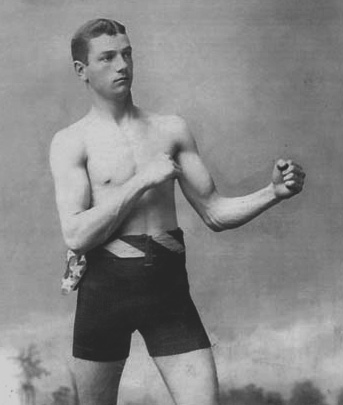Did the Term “The Real McCoy” Come From a Famous 19th Century Boxer Known as Kid McCoy?
This is the latest in a series of examinations of legends related to boxing and whether they are true or false.
BOXING URBAN LEGEND: The term “the real McCoy” derived from a famous 19th Century boxer called Kid McCoy.
The world of sports is rife with colloquialisms, many of which eventually work their way into our everyday lives. When something is easily achieved, it is a “slam dunk.” If you stick up for someone, you “go to bat” for them. When negotiating, you often tell the other side that “the ball is in their court now.” Adapting sports terminology to everyday usage is so common now that often phrases that have nothing to do with sports are given alleged origins related to sports, particularly when the real origin of the phrase is murky. This brings us to the phrase “the real McCoy.”

Kid McCoy was born as Norman Selby in Indiana in 1867 (he later took the name Charles McCoy). By the end of the 19th Century, Kid McCoy was one of the most renowned boxers in the world. Just five foot eleven and one hundred and sixty pounds, McCoy is still regarded as one of the greatest light heavyweights in the history of the sport of boxing. His punching style included his famed “corkscrew punch” that involved pivoting his hand nearly 180 degrees right before impact. Presumably this unusual style helped McCoy catch opponents unawares. His surprising punching style and his deceptively slight build has led to a number of legends about McCoy that allegedly serve as the basis for the genesis of the phrase “the real McCoy.”
One of the legends involves McCoy being at a bar when a much bigger man began picking on him. Others in the bar warned the man that he was messing with famed boxer Kid McCoy. He laughed them off, figuring that this small guy in front of him couldn’t be McCoy. So he challenged the smaller man to a fight. McCoy promptly knocked him out, leading the man to exclaim, “Oh my God, that was the real McCoy”.
Another version of the story is that McCoy, who was well known for feigning weakness during matches to trick his opponents into being overconfident, was doing just that during a match one day. He was acting like he was languishing until his opponent got close to finish him off, at which point McCoy surprised him with a barrage of punches. This led to the announcer of the match to exclaim, “Which is the real McCoy?!?”
Finally, yet another version of the story is also the most simple. Since McCoy’s build was so reasonably sized, people who were not obviously athletes could attempt to pose as McCoy, especially during the late 19th Century and early 20th Century when there was not as many readily available photographs to show otherwise. Therefore, when McCoy would visit a new city for a match he would have to let people know that he was, indeed, the real McCoy.
Are any of these stories the real origin of the term “the real McCoy?”
I do not believe so, no.
The phrase “the real MacKay” appeared in Scotland in print as early as 1856 in the poem Deil’s Hallowe’en. It is referred to as such in the poem as, “”A drappie o’ [drop of] the real MacKay.” There was, indeed, a Scottish whisky company at the time named G Mackay & Co Ltd and by the 1870s they had definitely adopted the phrase as their advertisement slogan. Famed author Robert Louis Stevenson mentioned the phrase in a letter in 1883, noting “He’s the real Mackay.”
The inventor Elijah McCoy was born free in Canada in 1844, the son of two African-Americans who escaped from slavery in Kentucky and fled to Canada where they had their son. The family moved back to the United States later in the decade and McCoy would become a U.S. citizen and live in the country for most of the rest of his life. Before settling in the United States, though, McCoy studied mechanical engineering in Scotland in the late 1850s. In 1872, McCoy registered a patent for a new lubrication system that he had developed for steam engines. As the story goes, McCoy’s lubrication system was so well regarded that it spawned numerous copycats, leading to train operators wishing to make sure that the lubrication system that they had was “the real McCoy.”
The first usage of the term “the real McCoy” in print occurred in The Rise and Fall of the “Union club” by James S. Bond in 1881. In the book, a character says “By jingo! yes; so it will be. It’s the ‘real McCoy,’ as Jim Hicks says.”
So you can debate whether there really is a difference between the term “the real MacKay” and “the real McCoy,” or if the latter was merely a derivation of the former, but either way, it appears evident that the term predated Kid McCoy, who was not even ten years old when “the real McCoy” first saw print, and as you might guess from the usage in Bond’s book that the term was already in use before Bond put it into print. And if you think there is not a difference between “the real MacKay” and “the real McCoy,” then the term really predated Kid McCoy, as he was not even born when it was in use in Scotland.
Therefore, either way, the legend is…
STATUS: False
Thanks to the great website, Phrase Finder, for the great information about the history of the term.
Feel free (heck, I implore you!) to write in with your suggestions for future urban legends columns! My e-mail address is bcronin@legendsrevealed.com





